A visit to Elliot Walker’s studio in Stourbridge
The V&A is promoting the arts and crafts through its permanent galleries and public programme including a wide variety of temporary exhibitions and displays. The V&A also has its own YouTube channel, offering a wide variety of informative and inspiring films. To celebrate the International Year of Glass (IYOG) in 2022 we released a film on the art of wheel-engraving on glass, featuring British artist Katharine Coleman. As part of the legacy of the IYOG we are currently working on another film about hot glass, working with British master glassblower Elliot Walker. After graduating with a Masters degree in Applied Arts from Wolverhampton University, Elliot spent eight years in the London Glassblowing studio of Peter Layton, specialising in sculpting molten glass at the furnace. His exceptional talent, consummate skill, dexterity, and speed, helped him to win series two of the Netflix programme, Blown Away in 2021. Part of his award was a three-month artist residency at the Corning Museum of Glass in Corning, New York. Since his return to Britain, Elliot has set up a brand-new studio with his partner Bethany Wood on the site of the historic Red House Glass cone, in Stourbridge. Elliot is extremely excited to be back in the historic glass quarter, where he trained as a glass artist.
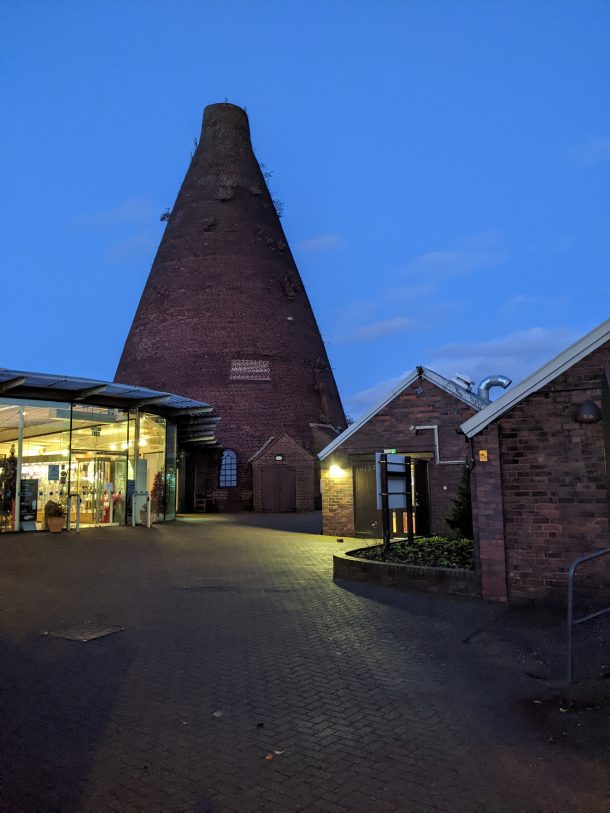
I travelled to Stourbridge with Peter Kelleher, the V&A’s own camera man, film producer and Motion Media Manager. We stayed overnight for an early start on our first day of filming. Elliot had visited the glass gallery at the V&A in advance and made some sketches and photographs of historic objects from our collection. He was particularly inspired by a Roman mosaic glass bowl and a fragment of an enamelled and gilt beaker made around 1250 in the Middle East, probably in Syria. The disposition of the delicately painted fishes on this fragment formed the inspiration of a new, sculptural wall-mounted work for Elliot, which he created especially for our film. None of the fishes on the fragment are shown complete, and Elliot took his cue from this to create a fish in seven different segments that make up his sculpture.
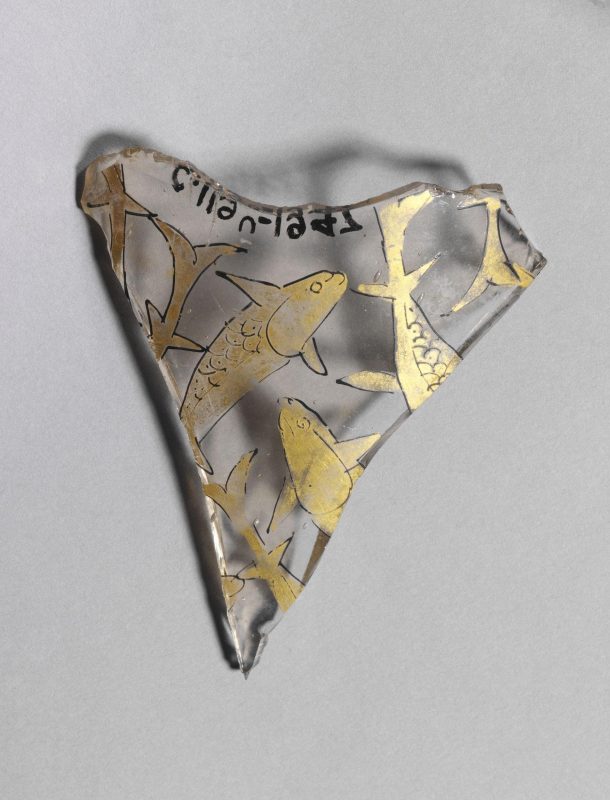
We were there to capture all the steps Elliot takes to create one of these segments from start to finish, making sure that we can show the process from the most advantageous angles. Working at the kiln requires teamwork, and Elliot was assisted throughout by his partner Bethany Wood, who is a skilful glassmaker in her own right.
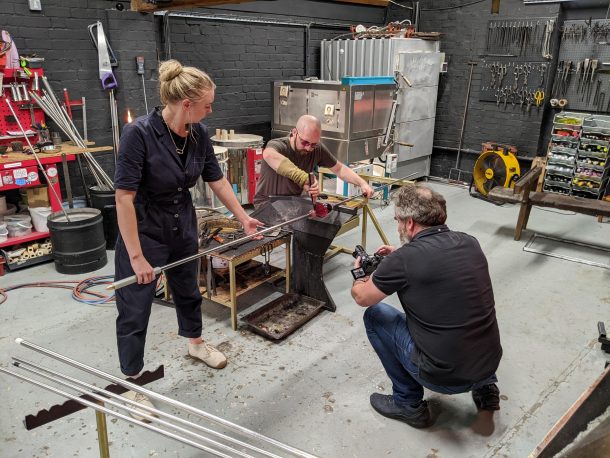
The process
Elliot creates the fish segments by layering the glass around a core of coloured glass at the end of his blowpipe. He introduces this core into the pot of molten glass through a working opening in the kiln, and ‘gathers’ a layer of clear, colourless glass around the core by gently rotating it while he withdraws it from the molten glass.
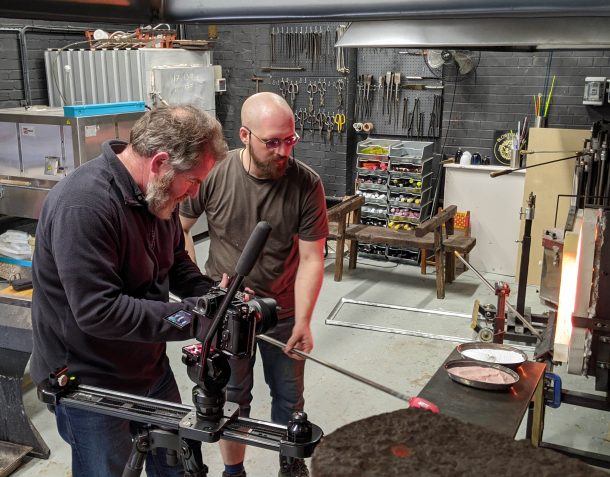
The clear glass layer is then coloured by rolling it through splinters of coloured glass. Over this, he gathers a new layer of colourless glass from the furnace, and this process is repeated several times. For the final layer Elliot uses a technique called the Swedish, or bubble, overlay, which requires a very high level of skill. This layer is made of a type of glass that obtains a lustrous, metallic sheen in reducing atmosphere. Elliot achieves this by torching the glass surface with a red flame starved of oxygen. This releases the oxygen present in the upper glass layer and causes it to change appearance. When each part of the sculpture is complete, it must be annealed in a special kiln, which allows the glass to cool down gradually over many hours.
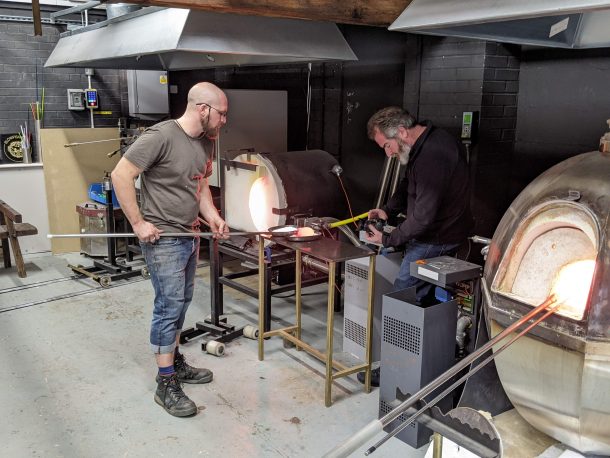
The next day, Elliot can finish each part in the so called cold-working studio. Here, each fish segment is cut to size with a diamond saw. Elliot then polishes the cut surface on revolving grind stones and subsequently, with wooden and cork discs, fed with increasingly fine abrasive pastes. After a final clean, the cut surface reveals all the beautiful layers of glass, which appear like the layers of an onion when cut in half. Finally, Elliot mounts the fish segments to the wall to complete his artwork.
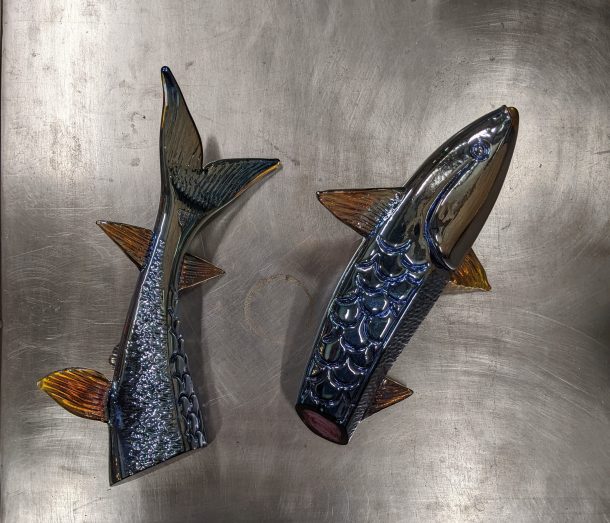
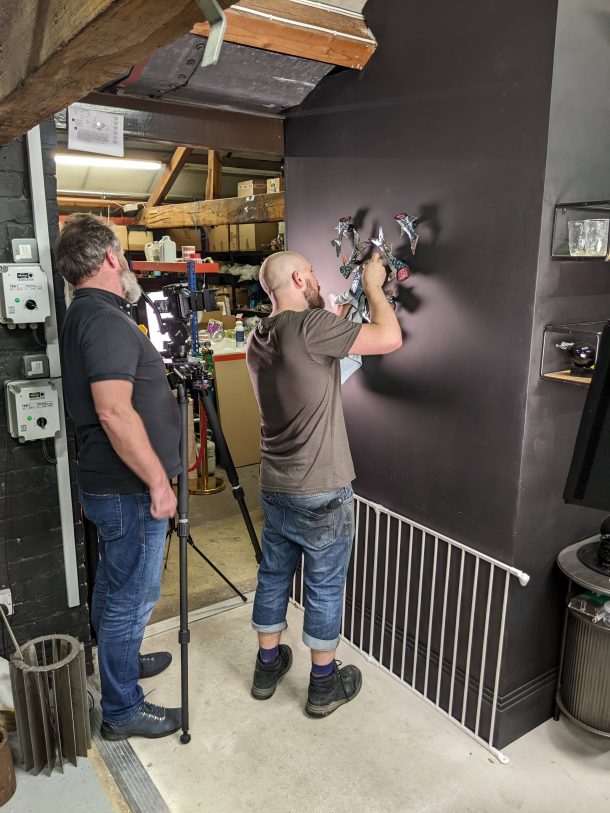
Elliot Walker’s studio is part of a historic glass working site. During our stay, we had the opportunity to visit the Red House Glass Cone next door. This huge red brick structure, dating back to the 18th century, was used by the famous firm Stuart Crystal until 1936. Across the road is the brand-new Stourbridge Glass Museum which opened its door to the public in April 2022.


